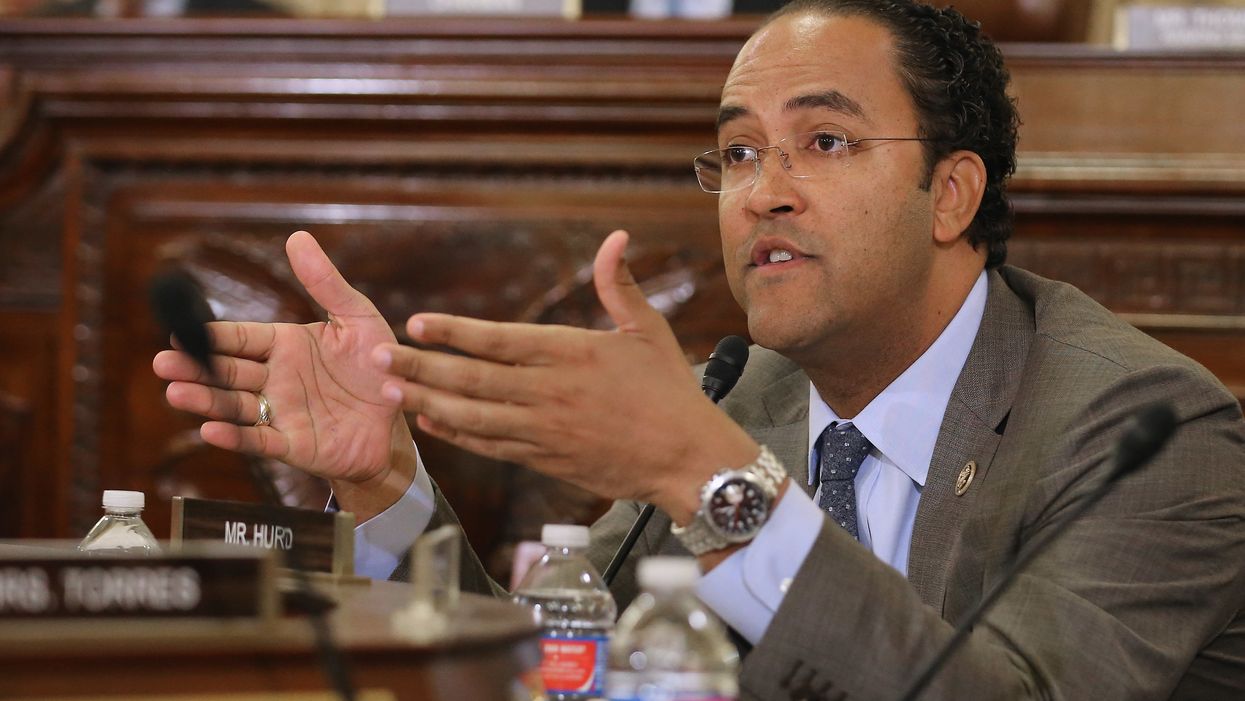
Chip Somodevilla/Getty Images

'The border is not this homogenous thing'
The only Republican congressman who represents a border district doesn't believe sealing off the entire border with a physical wall is the right solution—it's much more nuanced than that.
Rep. Will Hurd (R-Texas) told Rolling Stone in an interview published Friday that while illegal immigration is a problem that needs to be addressed, it's not as simple as most Washington politicians are trying to make it.
Hurd is a former undercover CIA agent. His district includes 820 miles of border territory, and is larger than 26 entire states. He agrees that a physical wall is useful in some places, but that it would be inefficient to use that same solution across the entire border.
The congressman also said that in addition to securing the border, more emphasis needs to be placed on addressing the root causes of illegal immigration from Central America, such as violence and lack of economic opportunity.
"Mexico deports more Central Americans than we do by almost two-to-one," Hurd said. "This is a shared problem, so let's address the root causes as well on that."
Here are some of his main points from the interview:
A physical barrier is only helpful in areas where there is city-to-city contact on both sides of the border.
"Border Patrol's response time in some areas is measured in hours to days. If your response time is measured in hours to days, then a wall is actually not a physical barrier. But where there's cities, where there's urban-to-urban contact, some kind of physical barrier makes sense, because it helps Border Patrol increase their response time because of the amount of time it takes to go over, go under, things like that."
Many areas of the 2,000-mile border have natural physical barriers.
"Then, in some places, I have Big Bend National Park. Santa Elana Canyon is a 6,000-foot cliff, then the Rio Grande River, and then another 6,000-foot cliff on the other side. Guess what? It's already a physical barrier. Lake Amistad, which is a lake on both sides of the border, has dozens of miles on either side. A wall in a body of water has another name. It's called a dam."
We need operational control of the border.
"We do not have operational control of our border. Operational control meaning we know everything that's going one way or the other. The only way you do that is by looking at all 2,000 miles of border at the same time. The only way you can look at all 2,000 miles of border at the same time is by using technology. ...You need a mile-by-mile assessment because each mile is different from the next."
To summarize Hurd's ideas for reducing illegal immigration, he suggests using technology such as radar and LiDAR (radar with light instead of sound) to police much of the border, securing urban areas with physical barriers, increase security at ports of entry where most illegal drugs enter the U.S., and administer aid to Central American countries to entice more of their citizens to stay.
"You do those things, put that together, it's a big package, but it's also what is needed in order to make sure our country is safe," Hurd said.
(H/T The Hill)